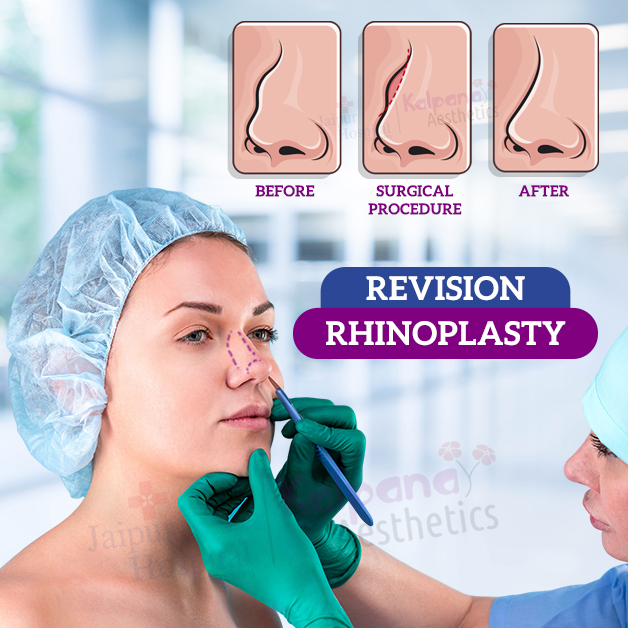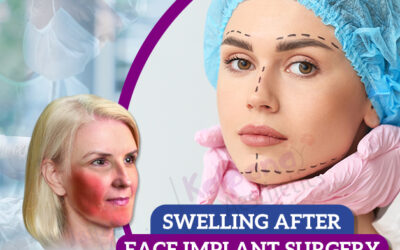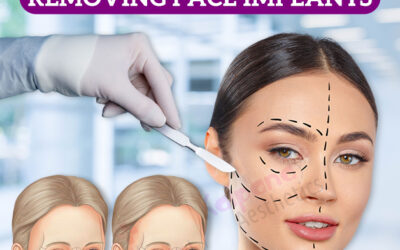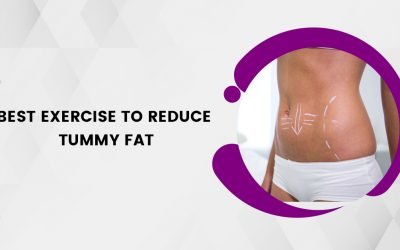Hello everyone! I am Dr. Vishal Purohit, a plastic surgeon specializing in rhinoplasty, or what is commonly known as a nose job. Today, I want to address a question that has come up frequently among my patients at Kalpana Aesthetics: Can rhinoplasty be performed as a revision procedure?
In short, yes! Revision rhinoplasty, also known as secondary rhinoplasty, is a procedure designed to correct any issues that may have arisen from previous nose surgery. Let’s dive deeper into the topic and explore what this entails.
What is Revision Rhinoplasty?
Revision rhinoplasty is a procedure where the nose is reshaped or corrected after a primary rhinoplasty. This can be done to address:
- Aesthetic concerns
- Functional issues
- Both aesthetic and functional issues
When is Revision Rhinoplasty Necessary?
There are several reasons why someone may require a revision rhinoplasty:
- Unsatisfactory Aesthetic Results: Sometimes, a patient might not be satisfied with the appearance of their nose after the initial surgery. In such cases, a revision procedure can help achieve the desired look.
- Breathing Difficulties: If the primary surgery results in breathing problems, a revision procedure can be performed to address any structural issues that may be causing the problem.
- Injury or Trauma: If a patient experiences injury or trauma to the nose after the initial surgery, a revision procedure might be necessary to restore the nose’s appearance and function.
- Healing Complications: Some patients may develop complications during the healing process, such as excessive scar tissue or infection, which may require a revision rhinoplasty.
I don’t want to go into the depths of why a particular problem may appear. If you have had a rhinoplasty and are facing some of the problems I just mentioned, I advise you to visit a plastic surgeon and discuss this in detail.
You can read also:- Dimple creation surgery for both men and women
Risks and Challenges
It is essential to note that revision rhinoplasty is more complex than primary rhinoplasty. Some challenges that come with this procedure include:
- Limited tissue availability: The initial surgery may have altered the nasal structure, leaving less tissue to work with during the revision.
- Scar tissue: Scar tissue from the first surgery can make the revision procedure more difficult, as it can affect the healing process and final results.
- Higher risk of complications: As with any surgery, there are risks involved. However, due to the complexity of revision rhinoplasty, the risk of complications may be higher than with primary rhinoplasty.
Choosing the Right Surgeon
If you are considering a revision rhinoplasty, it is crucial to find a skilled and experienced plastic surgeon who specializes in this procedure. Here are some tips to help you make the right choice:
- Board Certification: Ensure that the surgeon is board-certified in plastic surgery, which indicates that they have met the required education, training, and experience standards.
- Experience: Choose a surgeon with extensive experience in performing revision rhinoplasty, as this is a more complex procedure than primary rhinoplasty.
Preparing for Your Revision Rhinoplasty Consultation
Before your consultation, it’s a good idea to prepare by doing the following:
- List Your Concerns: Write down the specific issues you have with your nose and any functional problems, such as breathing difficulties. This will help your surgeon understand your goals and expectations for the revision procedure.
- Gather Medical Records: Obtain your medical records, including any documentation related to your primary rhinoplasty. This information will give your surgeon a better understanding of the techniques used in the first procedure and help them plan the revision surgery accordingly.
- Be Open to Discuss: During the consultation, be prepared to discuss your concerns and expectations openly with your surgeon. This will help establish a clear line of communication and ensure that both you and your surgeon are on the same page.
Recovery and Aftercare
Recovery from revision rhinoplasty may be similar to your primary rhinoplasty. You can expect some swelling and bruising, which should subside within a few weeks. Your surgeon will provide you with detailed instructions on aftercare, including:
- Pain management
- Care for the surgical site
- When to resume normal activities
It is crucial to follow these instructions closely to ensure a smooth recovery and minimize the risk of complications.
Remember, patience is key when it comes to recovering from a revision rhinoplasty. The final results may take several months or even up to a year to fully reveal themselves, so it’s essential to give your body ample time to heal.
Conclusion
Revision rhinoplasty can be a viable option for those who have undergone a primary rhinoplasty and are unhappy with the results or have experienced complications. At Kalpana Aesthetics, we understand the unique challenges that come with revision procedures and are committed to helping our patients achieve the best possible outcome. If you’re considering revision rhinoplasty, don’t hesitate to contact us to schedule a consultation. We’ll be happy to discuss your concerns, answer any questions you may have, and guide you through the process.
At Kalpana Aesthetics, we are dedicated to providing our patients with comprehensive care, ensuring that you feel supported and informed throughout the entire process. If you are considering revision rhinoplasty, get in touch with us today to begin your journey toward the results you desire.




